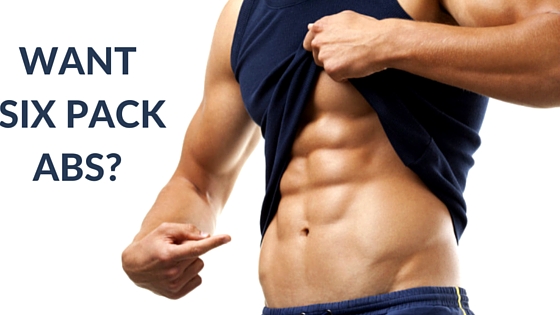What Are the Best Exercises for Six Pack Abs?
While diet plays an important factor in getting those “six-pack” abs, there are a few exercises that will work out your abdominal muscles without you ever having to do one single stomach crunch. One of the best ways to strengthen and define your abdominal muscles and hopefully leave you with a six pack to show off, without doing stomach crunches, is to focus on full-body exercises. Full body exercises force you to use your abs in a way that they were designed – as stabilizer muscles. Here a four basic, but effective exercises that will help get you on your way to the perfect six pack.
The Deadlift
The deadlift is a grueling exercise. Ask any of our Personal Trainers to help you with proper form to insure that you are performing it correctly. Deadlift refers to the lifting of dead (without momentum) weight, such as weights lying on the ground. It is one of the few standard weight training exercises in which all repetitions begin with dead weight. If the exercise is done properly you should strengthen most of the muscles in your entire body, including your abdominals. Your abs, in this exercise, act as stabilizer muscles. In order for the deadlift to utilize your abs, you have to maintain proper form. Your abs will get an incredible workout. Instead of doing stomach crunches, you are doing isometric contractions.
The Squat
The squat is the quintessential gym exercise for lower body strength. However, like the deadlift, you must tighten your abs in order to perform the movement properly. The amount of weight sitting on your shoulders is typically enough to cause a severe back injury if you’re not keeping your back perfectly straight and your abs tightly flexed. Again, you are performing an isometric contraction throughout the squat. In order to really work your abs, make sure you do a full squat. While half-squats and quarter-squats may appear commonplace in gym a full squat will really work your abs or core.
The Push-Up
A push-up not only helps you to get a stronger upper body, but also a stronger more defined midsection. It incorporates the stabilization muscles of your core, combining an upper-body pushing movement with a plank. It is, in fact, one of the best and most basic exercises for your core. Push ups are a higher value plank. You’re not only strengthening your abdominals by holding them still while gravity is trying to push your hips towards the ground, but you’re also strengthening your upper body “pushing” muscles; your chest, shoulders and triceps.
Chinups
A basic chin up is done with your palms facing towards you. This movement works your biceps, forearms, and even your shoulders. However, you will also work out your abdominal muscles if you contract them during the movement. To get an even better ab workout, use a dip belt and add as much weight as you can safely lift.
How It Works
Maintaining muscle requires more energy (calories) than fat. The more muscle you have, the higher your metabolism. The higher your metabolism, the less fat you should be storing. Here is where full body exercises become key. Instead of focusing on just your abs, you’re working to build more muscle throughout your entire body. Squats, deadlifts, push-ups and weighted chinups are intense. They burn a lot of calories during the workout. They also put an incredible amount of stress on your muscles – damaging them through micro-trauma. If you are eating enough protein, (How Much Protein Do I Need) drinking enough water every day and, in general, you should try to drink between half an ounce and an ounce of water for each pound you weigh and getting enough rest, your body will respond to these heavy workouts by building and repairing the damaged muscle tissue all over your body. To do this, your body will turn to its fat reserves. Additionally, the new muscle will require you to burn more calories, some of which will come from fat tissue on your body. All of this will eventually lead to a lower body fat percentage and a defined, toned, abdominal region.

